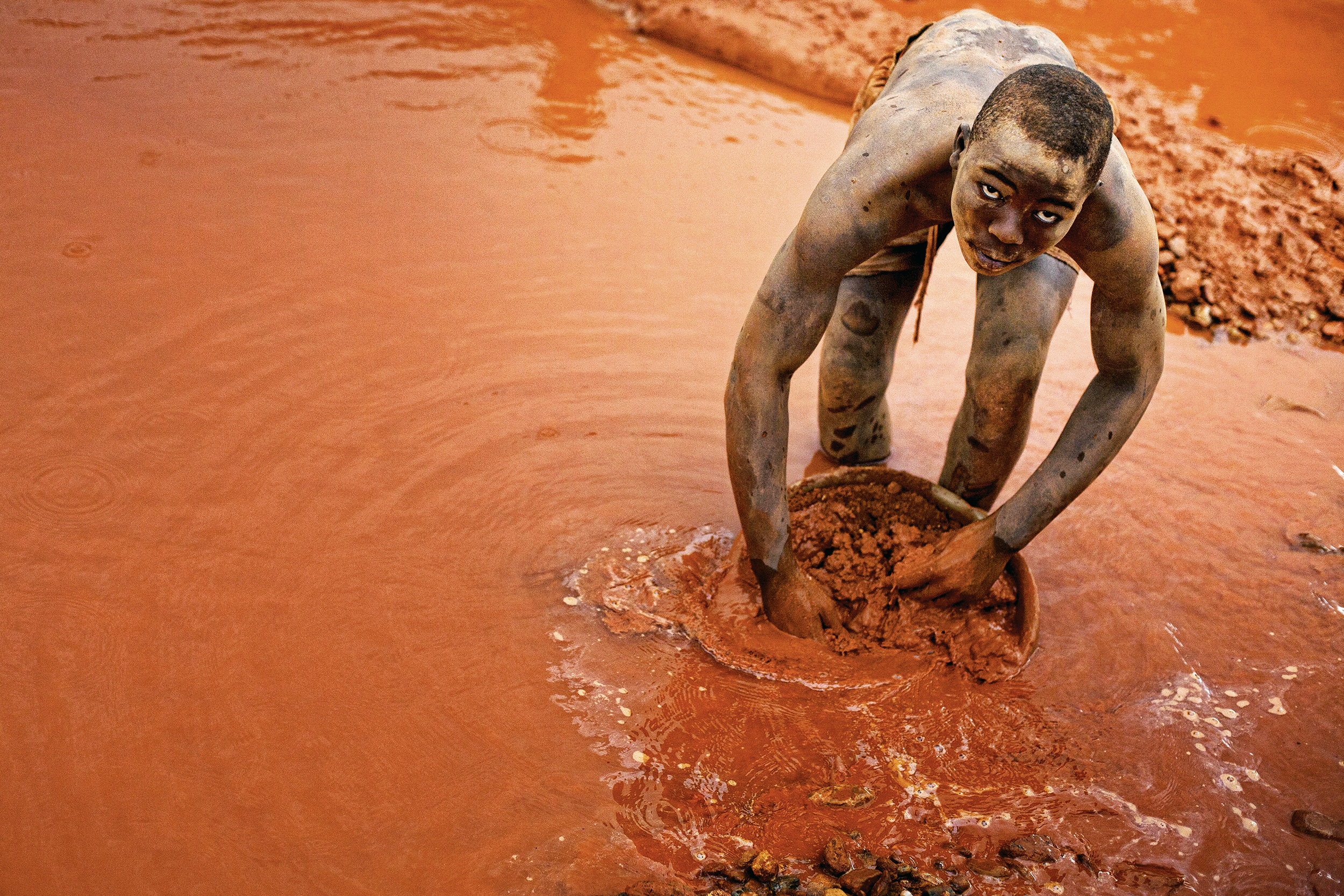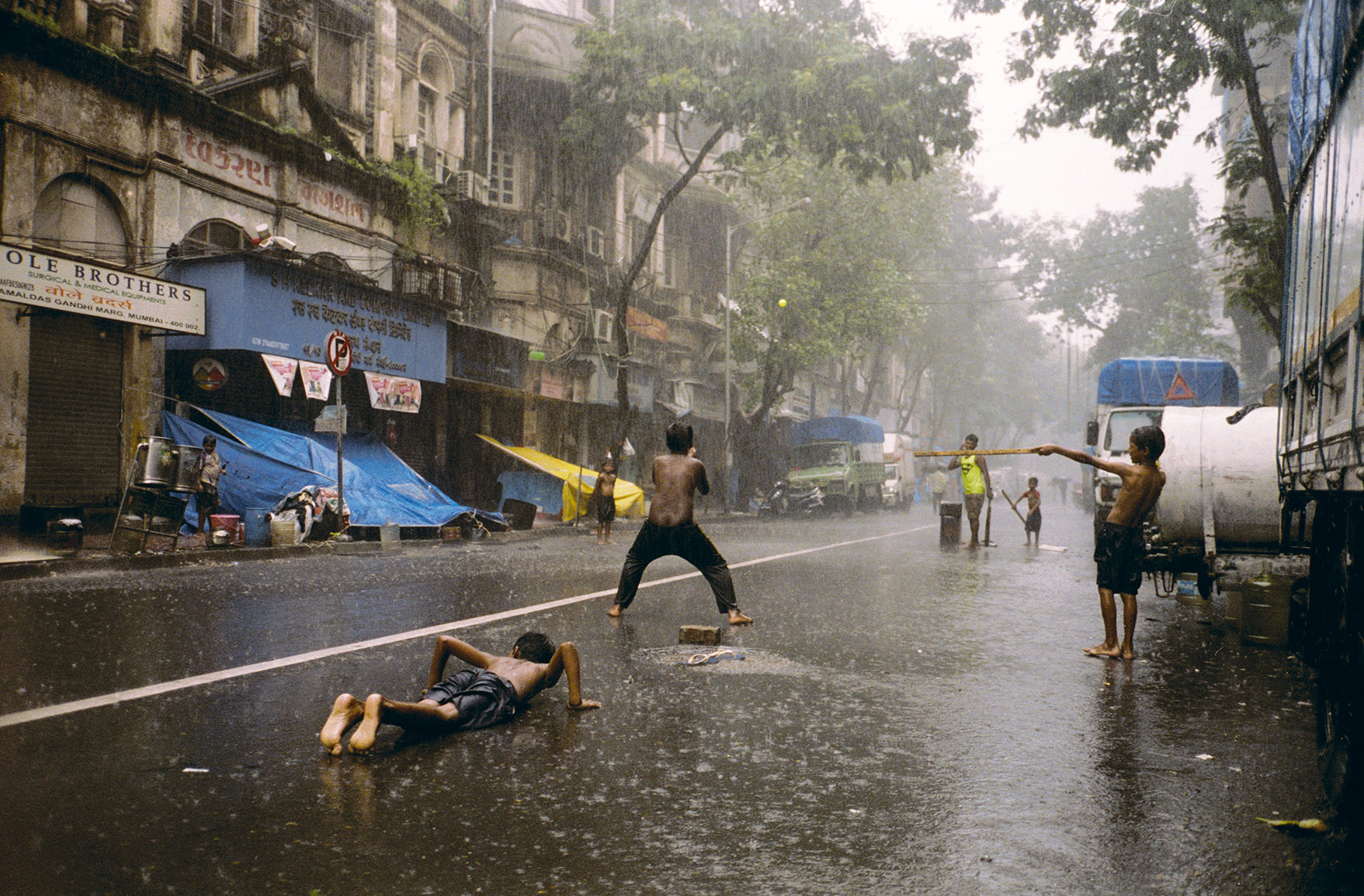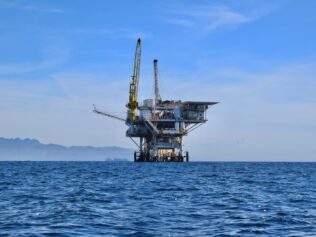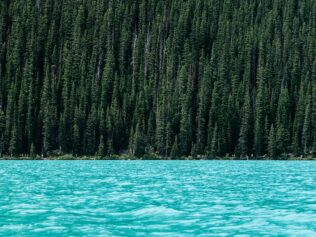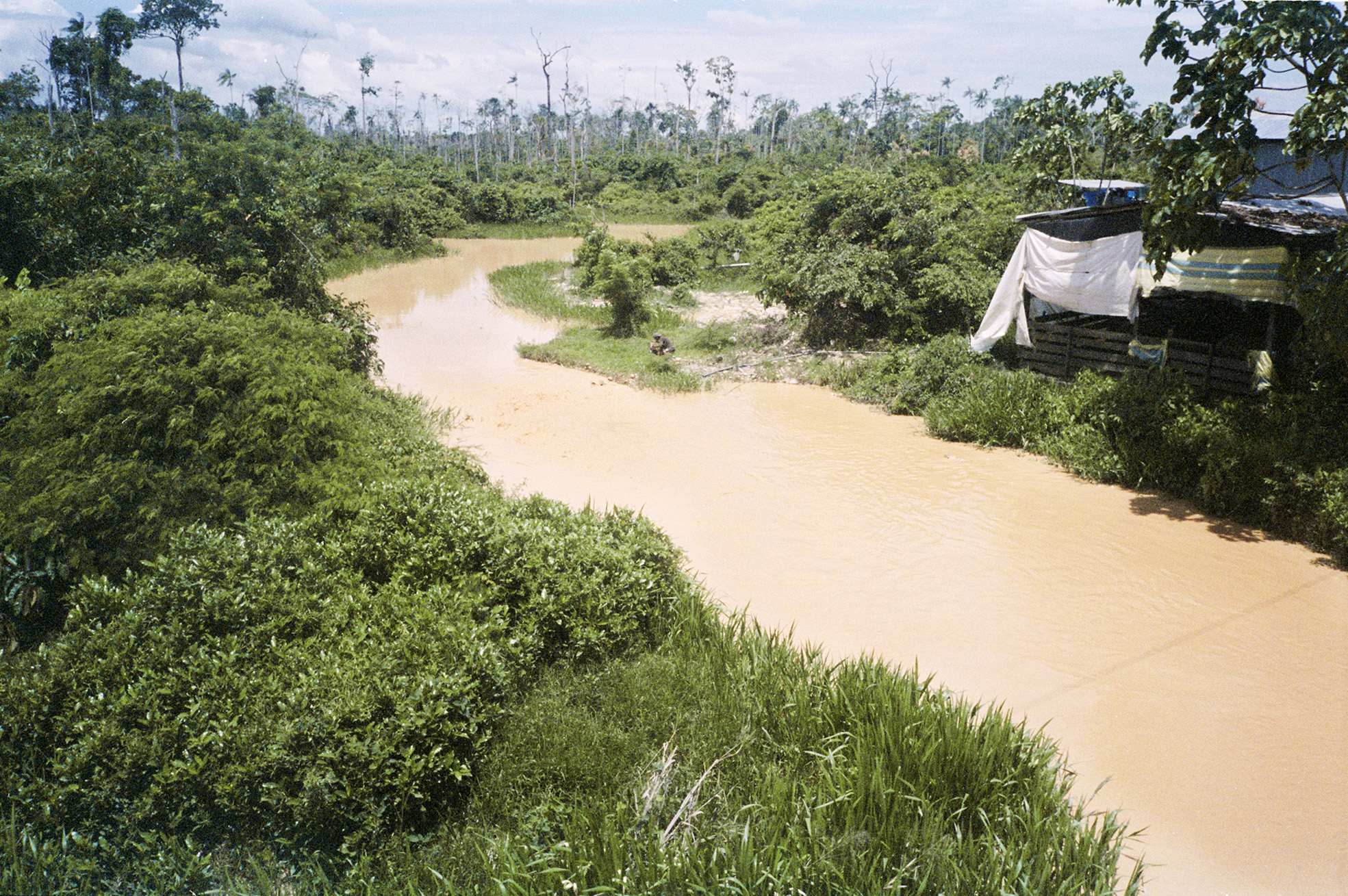
In the past, the small Midlands province town of Shurugwi, some 350km southeast of Harare, the Zimbabwean capital, and once famed for chrome and gold, used to attract foreign and local tourists because of the picturesque Boterekwa escarpment.
“Boterekwa”, in the local Shona language, means “winding”. Italian constructors carved a 6km road that meanders and twists through the steep slopes of the mountain, giving those who use or visit the escarpment a breathtaking experience.
Beautiful fresh water creeks and streams snaking through thick and varied bushes used to hug the foot of Boterekwa, which is 1440km above sea level. .
These days, the creaking beetles and frogs that produced a symphony in the streams at night are as rare as the tourists. Save for the odd season when there are sufficient rains, the streams are mostly dry.
Panning for survival
Driving through the steep escarpment is still a beautiful experience but there is an evident ugliness dominating the valley now.
Lush bushes have given way to mushrooming shacks set up by hundreds of small time illegal gold miners.
They come from surrounding villages but a significant number is from different districts.
Over the years, the unauthorised miners who range from boys hardly into their teens to family men and women in their late 40s, have dug pits and tunnels into the valley, scooped out the earth and panned it for gold.
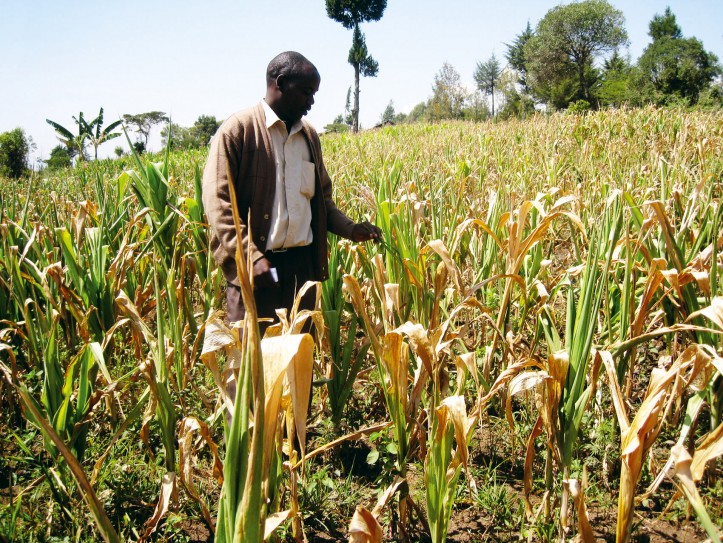
They have done the same on the banks and bed of Mutevekwi, an average river running through the valley below.
When the rains fall—and they have been rare in the last decade or so—the red soils dug out on the valley is washed into the river, clogging it and turning the water into an ugly brown.
That makes it almost impossible for livestock from surrounding rural farming settlements to drink from the river as they used to do before the area was invaded by the small-time miners.
Many cattle have been reported to have died after drinking the water, which is laced with mercury that the miners would have used to separate the alluvial gold from impurities.
It also means that villagers settled downstream have difficulty using the dirty and polluted river water to irrigate their small vegetable gardens.
The vegetables provide food and are sold to augment meagre household income.
The ugliness of the valley goes beyond that. Over the years, tunnels the miners have dug as they search for alluvial gold ore have collapsed, burying the unfortunate ones.
Families and official rescue teams mostly fail to retrieve the bodies, turning the earth beneath the valley into a treacherous underground graveyard.
Rival drunken and violent miners sometimes brawl and hack each other to death with machetes and robbers prowl the area.
“We don’t enjoy this kind of life (illegal gold panning). It is dangerous and full of violence, but we have families to look after. There are no jobs in this country and panning for gold like we are doing is the only way we can earn money, send our children to schools and make sure we survive,” says Bright Muzvidziwa, 28.
A gram of gold fetches in the region of US$40. It can take up to a week but sometimes longer for a miner to get a gram. In rare cases, he or she “strikes gold” and produce more.
Like Muzvidziwa, many of the illegal gold miners readily blame the economic crisis that has bedeviled the country for close to 20 years, but the longer you talk to them, the more you discover that the dangerous trade they have been forced into is caused by factors beyond the economy.
Quite a good number of the illegal miners are school drop outs who enrolled at poorly resourced rural schools, failed their high school examinations and did not acquire specialized job skills.
They can only get jobs as ordinary labourers but, even then, many have never ventured out to look for formal jobs, choosing instead to remain in their villages and eking out a living as small-scale farmers on their parents’ communally owned farms or the subdivisions parceled out to them.
Peter Govhani, a 48 year old father of four from the same village as Muzvidziwa about 40km to the east of the escarpment, gives the clearest hint that changing climate over the years is a major factor that has driven the hundreds of illegal miners to the valley over the years.
Govhani started panning for alluvial gold at the foot of the Boterekwa escarpment in 1992, as an unmarried 22 year old man.
That year, there was a severe nationwide drought that led to massive crop failure and the worst hunger that the country has faced in the past three decades.
“The 1992 one is the worst drought I clearly remember. Rains came around October but quickly went away. All the maize and other crops we had planted wilted and died away. Hunger stared us in the face. We heard that a few people were panning for gold at Boterekwa and sell it to buyers from the towns, so we joined them. Before long hundreds of makorokoza (local Shona language for illegal miners) had invaded the valley.
“The following season was blessed with good rains and most of us returned to our villages and focused once again on farming. For more than 10 years, we did not think it worthwhile coming back to Boterekwa, but the droughts became more frequent after that. Harvests have been bad almost every year so we are now almost permanently camped here,” said Govhani.
Dry farming seasons have been interspersed with excessive rains and floods that have also destroyed crops and left villagers needing food aid.
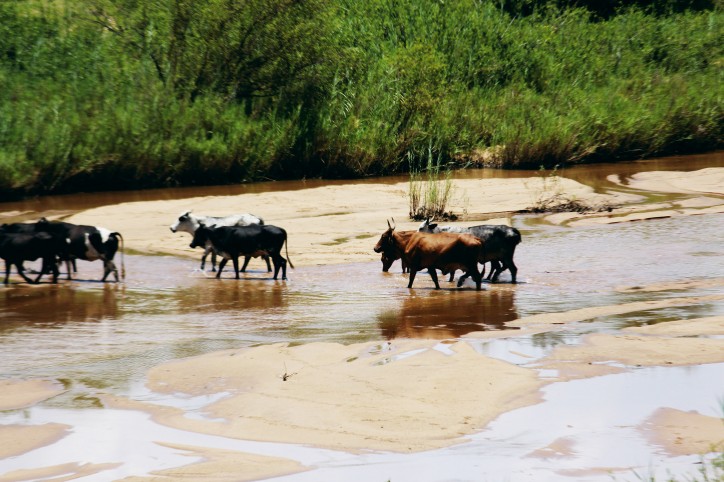
Changing climate
Zimbabwe, a country that heavily relies on agriculture for food and economic development, has been hit hard by climate change.
Droughts and floods have become increasingly frequent and rainfall patterns have shifted dramatically, making them unpredictable.
The onset of rains is generally delaying and rainy periods are becoming shorter. But, in some cases, the rains come early, then disappear and resume for longer periods than in previous seasons.
Numerous studies carried out in Zimbabwe indicate that there has been a steady decline in average rainfall over the decades and this is predicted to continue.
In effect, farming regions that used to be fairly wet have turned drier while the semi-arid and arid zones are expanding.
This implies that food production is steadily declining, forcing the country to import maize and other staple foods to feed the nation. The production of the staple maize crop will increasingly fall over the years.
In turn, this has disturbed the performance of industries that depend on agriculture, a trend that has tended to force massive job layoffs, push unemployment rates higher and steeply reduce foreign currency earnings.
Reduced rainfall alternating with floods have also had a negative impact on the environment. Major rivers are silting up and flow for shorter periods now, rich top soil is being washed away and forests are disappearing fast.
Zimbabwe is getting hotter, in keeping with global warming trends, and this has increased the frequency of diseases such as malaria and tsetse fly, which kills livestock.
Hunger
Gloria Zamba, a 32 year old female miner and a single mother of three school going children, was raped one night as she slept in her shack in the Boterekwa valley.
While the rapist was arrested and is serving a seven year jail term for the crime, she remains with the scars of the rape but will not stop panning for gold.
“I have no other means of survival, so I keep coming back. To avoid being raped, I operate and sleep together with three other female miners. I live with my elderly parents at our rural home and my father has allocated me a plot on which to farm.
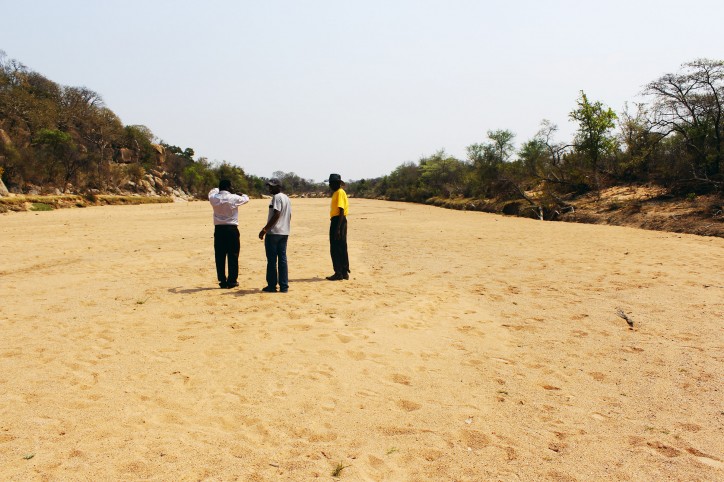
“The soils are tired and the rains are too unreliable. I wouldn’t be coming here if I was getting good harvests. Of course, when the season is good, there is no need for me to come here as I harvest enough to feed my children and sell to buy basic commodities, school uniforms and to pay their fees, but that is now rare,” said the sinewy woman.
Her father, Mutodi Zamba, 70, is the headman of a village 30km away and Gloria just gave directions to her rural home, insisting that she had no time to accompany the writer there, unless she were to be compensated for lost time.
Mutodi heads a village of about 100 homesteads that follow a now largely silted stream. It is in March, a time close to the harvests and, this year, the rains have been falling steadily since late last December.
The first rains came in mid-November and the farmers rushed to plant with them. The crops, mainly comprising maize, groundnuts and sweet potatoes, germinated but died after a short while because it became too dry and hot.
“We had to replant with the new rains after Christmas. The lucky ones are going to get fairly good harvests this year, but the majority will be begging for food once again.
“This is the problem with the rains these days. They make it difficult to plan your farming. In the old days, the rains always came in September and we would start preparing the land in August. By December, we knew that we would be eating green mealies and were certain that, by late March, we would have finished harvesting our crops,” he added.
Most of the poor villagers who live on less than a dollar a day could not afford to buy new seed and fertilisers. Some could not afford the draught power to till the land over again because they no longer have enough cattle or donkeys to pull the ploughs.
Repeated droughts and the resultant food insecurity has forced them to sell off the livestock to buy food, pay school fees and meet the occasional medical expenses.
Mutodi has sad memories about his village. Pointing at the stream with an unsteady hand and almost in tears, he tells of how the river used to heave with water throughout the year and, as boys, they used to go fishing and swimming at any time of the year.
Now, despite the rains that have fallen, the river is largely silted with sand.
The thick bushes in which he and his contemporaries herded large numbers of cattle as teenagers are almost gone and there are hardly any pastures for the small numbers of goats, cattle, sheep and donkeys that remain.
And the young generations hardly know what elephant grass that used to be so common looks like.
Food scarcity during lean seasons is forcing villagers to trim down on daily meals.
“Most families have one main meal in the evening. Those that can, get small amounts of food in the morning but children are now used to going to school on hungry stomachs.
“When the rains were reliable, we would sell excess grain and the money we got took care of our daily needs. We would even use the grain and livestock to pay fees,” said Mutodi.
He must now depend on his children who live or work in the towns, but the remittances they send back home are getting thinner because some have been retrenched and those that are still employed sometimes go for months without salaries since the companies that employ them are struggling.
Rivers dying
It is not only small and medium sized rivers that are drying up but the major ones too.
The Save River is among such victims. It stretches for an estimated 400km from Zimbabwe through Mozambique and winds up in the Indian Ocean.
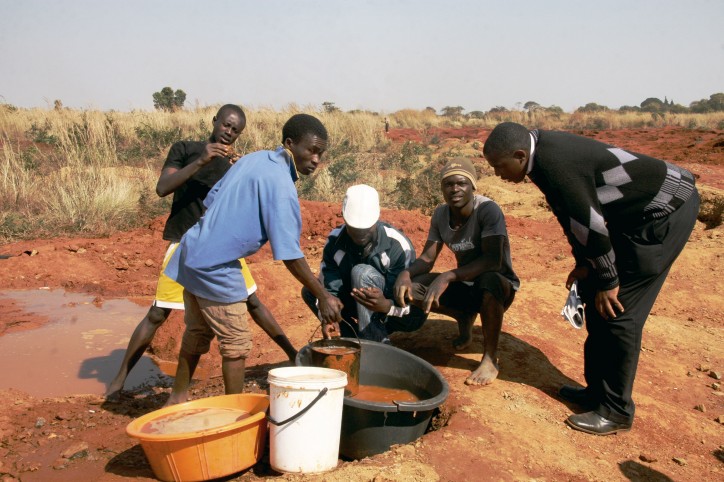
Over the decades, Save River has been a vital source of water and life for communities through which it runs.
It provided an opportunity for small-scale irrigation projects for sugar cane farmers and villagers producing vegetables for local use and sale, in addition to low level fishing.
But not many are now benefiting from the once roaring river which has been silted over the years and is only capable of holding small amounts of water, unlike in the past.
Save River runs through rural Chipinge district in Manicaland province, slightly more than 300km southeast of Harare. In 2017, it became flooded because of the El Nino phenomenon and the water levels were also high in early 2018, but that has not been the case in previous years.
“The rains have been generous this season even though they came late,” remarked Laurence Dliwayo, a 50 year old villager from Chipinge. “But the water levels will fall very soon and you will find only ponds on the bed of the river”.
During the dry season, local farmers drive their livestock from as far as 60km away to water them because the local rivers easily run dry. When the ponds become too shallow as the dry season progresses, the villages resort to digging small wells on the river bed sand to water the animals.
“There was a time when fish was not a problem throughout the year. Because Save is now almost dry, we are forced to look for money to buy meat or to slaughter our remaining livestock to feed ourselves,” added Dliwayo.
Rural Chipinge, like almost all the other rural districts, is heavily dependent on agriculture and when the rains are not sufficient, villagers’ vulnerability is easily evident.
Most young men and women, upon completing their fourth form of high school, migrate to neighbouring South Africa to look for jobs as farm labourers, cleaners, maids and vendors.
When they can, they send back home small amounts of money to their parents to buy food during times of hunger.
Some have turned to rearing chickens and selling them at the numerous business centres in the district. Others cook meals for the many people who pass through the shopping centres, but a fair number of women and young girls from the villages has turned to prostitution.
“Lack of rains has affected the family unity we used to know as we grew up. Our children run away the moment they finish school and many never remember or return home. They are running away from hunger,” said Dliwayo.
The migration of young men and women has created another headache. Dliwayo’s three sons have permanently relocated to South Africa while his only daughter is now married and lives with her family in the provincial city of Mutare on the border with Mozambique.
So, even when the rains are good, the burden of preparing and tending the crop fields or look after the livestock is left to him and his wife. The two-member family has no choice but to reduce the size of farmland under cultivation, and that is a common pattern within surrounding communities. The result is reduced food production.
Cyclones and floods that have pounded the area in several seasons since 2000 have destroyed bridges, schools and homes. There is no money to repair the damage and bad roads have made the transportation of farm produce during good years difficult.
Traders who bring foodstuffs to the district have seized on this and steeply raised the prices of the commodities, making it difficult for impoverished households to get access to food.
To beat the hunger, Chipinge villagers are also risking the vicious security in the nearby Marange diamond fields to illegally pan for the gems.
Little relief
A plethora of international and local non-governmental organisations have been descending on the hungry communities, donating maize meal, cooking oil and other basic commodities to fend off hunger during lean years.
Sometimes, NGOs like the World Food Programme (WFP) give the needy villagers cash handouts amounting to US$20 for a family averaging five members to enable them to buy foodstuffs.
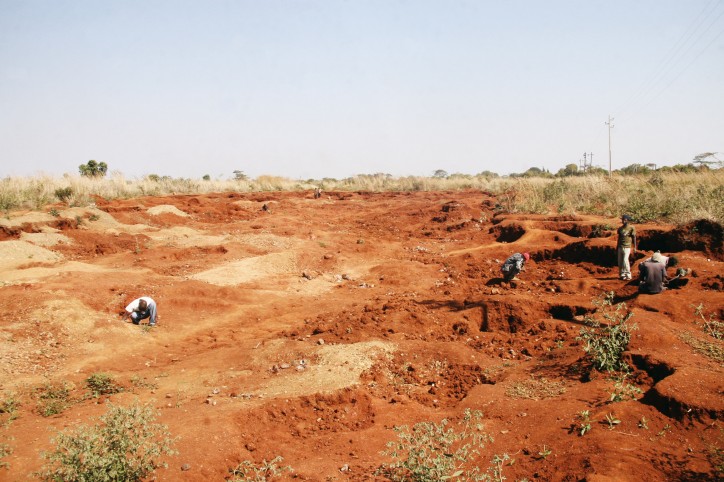
Community members welcome the gesture by the NGOs, but they are quick to point out that the handouts are hardly enough, perennially.
“We are thankful to the NGOs for thinking about us. The problem is, what they give us is not enough. For instance, $20 can hardly do anything for my family of six people. It is not enough to buy maize meal (a staple food ingredient) to last the whole month,” said Tambu Saizi, a 35 year old mother of four from Goromonzi, a rural farming district some 50km southeast of Harare.
Goromonzi district lies within a zone that used to get favourable rains in the past, but it has become drier and drier in recent years.
The soils are getting weaker too and the smallholder farmers are increasingly having to depend to fertilisers that are too expensive for the majority of the farmers. Without the fertilisers and crop chemicals, yields are naturally poor even when the rains are good.
Africa feeling the pinch
Climate change has not spared southern Africa and sub-Saharan Africa.
Drought induced by climate change and other extreme weather occurrences is now common in southern Africa.
The 2015-16 farming season was affected by El Nino, forcing the Southern African Development Community (SADC) to declare a regional drought that caused a food deficit of 9.3 million tonnes, according to the United Nations Office for the Coordination of Humanitarian Affairs (OCHA).
Resultant food shortages, says OCHA, left some 500,000 children acutely malnourished while millions of people could access clean water.
The 2016-17 season, on average, enjoyed better rains, but several parts of the region, mostly Mozambique, Zimbabwe and Tanzania, were hit by floods that washed away crops in many areas.
Zimbabwe, Mozambique, Zambia, Malawi, South Africa and Lesotho are among countries that were affected by the drought that occurred between December 2017 and January 2018, according to the US based Famine Early Warning System (FEWSNET), and crops planted early wilted, reducing the potential harvests for this year.
The Inter-governmental Panel on Climate Change (IPCC) which operates under the United Nations (UN) says southern Africa is particularly vulnerable to climate change.
General agricultural production in the region and the rest of sub-Saharan Africa, noted IPCC in a 2007 report, will decline by 12 percent by 2080 as a result of climate change on the continent.
The panel has predicted that food production in particular will by 2080 fall by as much as 50 percent, as a temperatures are predicted to rise by up to 4 percent. This is forecast to leave as many as 170 million people facing severe hunger.
According to the World Bank, sub-Saharan Africa is bound to beat Asia as the most food insecure region by 2080 as land suitable for food farming will decrease by between 9 percent and 20 percent due to climate change.
Thus, Africa will become the most vulnerable region to climate change in the world.
Just like in Zimbabwe, weather systems on the continent are becoming increasingly unpredictable and erratic as floods ravage arable land.
Arid and semi-arid land will stretch by between 60 million to 80 million hectares while rising temperatures will increase the incidence of crop pests and diseases as soil fertility falls in the process.
For more than a decade, the continent has been seized with finding solutions to the worsening impact of climate change, but with bare results due to the lack of financial and other resources and poor coordination to ensure the interventions are effective.
In 2006, the African Union (AU) adopted a continental action plan that involved integrating climate change in development strategies. After that, high level African stakeholders stepped up efforts to source funding for anti-climate change campaigns and various regional blocs have come up with coordinated weather forecast, early warning and greenhouse gas reduction systems, among other measures.
The Great Green Wall
The Great Green Wall is one of the most famous and ambitious interventions that the continent has adopted.
One of the most famous interventions is the Great Green Wall, which the United Nations Convention to Combat Desertification (UNCTCD) has described as a “game-changing initiative”.
The idea of the Great Green Wall was borne out of the realisation that climate change is massively contributing to desertification and was launched in 2007.
The trans-border initiative involves building an 8000 km long and 20km wide belt of trees across northern Africa, particular in the region covering the extremely arid Sahel region and the Sahara desert.
UNCTCD says the project is already covering 20 countries in the Sahel region, with more than US$8 billion having been obtained or promised towards the completion of the wall under the leadership of the African Union.
The wall is hoped to create jobs and boost food security while ensuring that the vast expanse of trees will reforest the desert area while benefiting communities will be equipped with better indigenous land management techniques.
The initiative is forecasted to restore 100 million hectares of productive and arable land in mostly rural areas while absorbing carbon dioxide that has been largely blamed for global warming and at the same time reducing the incidence of droughts.
While it may be too early to judge the initiative harshly, sceptics are already saying it is a simple plan to solve the complex problem of climate change and Africa will struggle to get the money to make the wall a reality.
A good amount of the area that will be covered by the project is uninhabited and that means there will be no people to tend the trees and implement the project, the critics add, insisting also that there is little chance the trees will survive anyway.
Besides, the project is moving at a snail’s space but where it has been implemented, there are fair signs that it can succeed.


